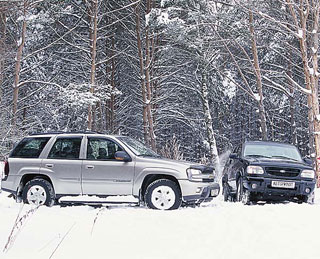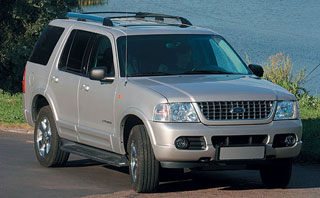Test drive Ford Explorer 2001 - 2005 SUV
Where the infantry is not passed
Ruveners in American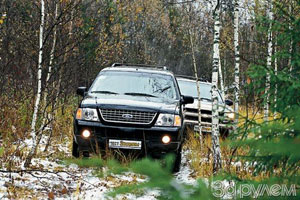 Ford explorer made his debut in 2001, replacing the popular first -generation all -terrain vehicle, who lasted as long as eleven years on the conveyor. A full-wheel drive frame car is produced only with a five-door body (the predecessor also had a three-door version) in a five- or seven-seater version. Benzine engines V6 and V8 volume, respectively, 4.0 and 4.6 liters, five -speed gearboxes - mechanical and automatic. The cost of a test car in the Limited Car with an engine of 4.6 liters and an automaton is $ 49.9 thousand.
Ford explorer made his debut in 2001, replacing the popular first -generation all -terrain vehicle, who lasted as long as eleven years on the conveyor. A full-wheel drive frame car is produced only with a five-door body (the predecessor also had a three-door version) in a five- or seven-seater version. Benzine engines V6 and V8 volume, respectively, 4.0 and 4.6 liters, five -speed gearboxes - mechanical and automatic. The cost of a test car in the Limited Car with an engine of 4.6 liters and an automaton is $ 49.9 thousand. The medium-size chevrolet-trailler was first shown at the very end of 2000. A five -seater frame car is produced only with the body of a five -door station wagon with a standard or elongated base and is equipped with rear or all -wheel drive.
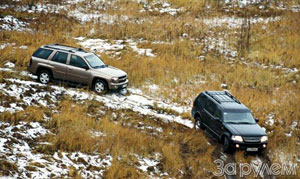 Power unit - in -line gasoline six, 4.2 liters, aggregated with a five -speed manual gearbox or with a four -speed automatic. The cost of a test all -wheel drive in the LTZ configuration with an automatic transmission is $ 48.8 thousand.
Power unit - in -line gasoline six, 4.2 liters, aggregated with a five -speed manual gearbox or with a four -speed automatic. The cost of a test all -wheel drive in the LTZ configuration with an automatic transmission is $ 48.8 thousand. Remember the plow expression from advertising booklets - an uncompromising SUV? Do not be deceived: this is how the peaceful all -wheel drive station wagon is characterized, above the usual raised above the road, and a professional all -terrain vehicle. We will disappoint the lovers of the red word: even the tank does not correspond to this definition. Any car, an all -around, in particular, is a set of compromise solutions designed to satisfy various, sometimes conflicting requirements. Based on their weight, each designer finds its own compromise. Let us compare the two solutions of the same problem - compact, by American standards, all -resistant Ford Explorer and Chevrolet -Traillair.
Traditions and evolution
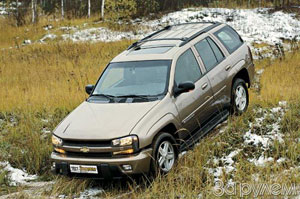 The North American automobile market is the largest in the world. It sells the lion's share of all -districts. Here they belong to the tracks, that is, to trucks, and, apparently, that is why they retain the commitment of the frame structure. This was inherited by an explorer and a trailler.
The North American automobile market is the largest in the world. It sells the lion's share of all -districts. Here they belong to the tracks, that is, to trucks, and, apparently, that is why they retain the commitment of the frame structure. This was inherited by an explorer and a trailler. However, according to the American classification, both of them belong to the category of SUV (Sport Utility Vehicle) - sports and utilitarian cars, and therefore some evolution towards asphalt is quite legal. For example, in the design of the pendants: the first explorer and blazer in the front had double transverse levers and torsions, as elastic elements, and in the back there were unreasonable beams on springs. More cars have appeared in new models: they improve comfort and give accuracy to the reaction of the machine, but, alas, not so tenacious on the roads. In front are the same double levers, but now significantly spaced in height, and spring -amortizer racks. The springs firmly settled behind: at Ford - on racks in an independent multi -link suspension, in a chevrolet - on an uncertain beam suspended on five rods.
8+5 or 6+4?
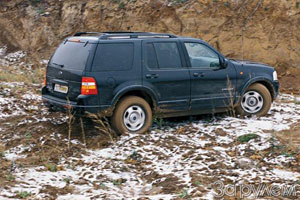 Gasoline in North America is cheap, because in the loty of engines and the number of cylinders they are not shy, and economical diesel engines on many models do not install at all. For a medium-sized pickup or an all-terrain vehicle, a V-shaped gasoline six or eight is considered the norm. On Ford, a modern interpretation of a traditional solution is a new aluminum engine V8 with a volume of 4.6 liters and a capacity of 242 hp. With regular replacement of filters and oils, he will require the first serious service only after 160 thousand km. A new five -speed automatic gearbox is also blocked with the engine, the mileage of which is almost a quarter of a million kilometers before the bulkhead. The dynamics of a two -ton explorer with such a power plant will be envied by many cars: up to 100 km/h for 9.8 s. The maximum speed for the American version, which visited the test, is limited to 160 km/h.
Gasoline in North America is cheap, because in the loty of engines and the number of cylinders they are not shy, and economical diesel engines on many models do not install at all. For a medium-sized pickup or an all-terrain vehicle, a V-shaped gasoline six or eight is considered the norm. On Ford, a modern interpretation of a traditional solution is a new aluminum engine V8 with a volume of 4.6 liters and a capacity of 242 hp. With regular replacement of filters and oils, he will require the first serious service only after 160 thousand km. A new five -speed automatic gearbox is also blocked with the engine, the mileage of which is almost a quarter of a million kilometers before the bulkhead. The dynamics of a two -ton explorer with such a power plant will be envied by many cars: up to 100 km/h for 9.8 s. The maximum speed for the American version, which visited the test, is limited to 160 km/h. The Chevrolet motor was created under the motto a good six no worse than the eight. Indeed, a lighter in -line Vortek engine with a volume of only 4.2 l273 hp, content with
93rd gasoline, and in moderate quantities. Due to the adjustable phases of gas distribution of at least 90% of the maximum torque are available in a wide range of 1600-5600 rpm. This is what allows the engine to work quite efficiently with a conventional four-speed automatic, which reduces the number of switches and shocks when accelerating or triggered by a kick downs. The result is an acceleration of up to hundreds for 9.6C and a maximum speed of 193 km/h. Develops
Cruise control, popcorn, Coca-Cola ...
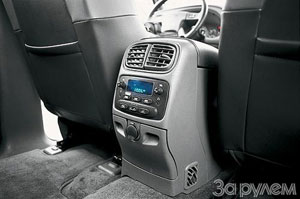 They say that these three things need an American driver for happiness. If so, then he will like our pair of all -wheel drivers - soft, spacious salons, refined by comfort devices, like a Christmas goose with apples. Without stopping on trifles, we note climatic settings with separate temperature control on the right and left, memory for two seats settings, six -disc chainger, frontal airbags, ABS, automatic turning on the headlights, darkening of the internal mirror. In Chevrolet, this splendor is supplemented by the washer of the headlights, the rain sensor, automatic darling as well as external mirrors, a pair of side pillows, a separate control panel of the audio system for the rear passengers. In addition to the seat settings, the trailler will remember the settings of mirrors, climatic systems and favorite radio stations. There is even a built -in digital tape recorder to recording tips to yourself - for example, a trip route or the right address. But the explorer has a longitudinal adjustment of the pedal unit, and its light beige salon with inserts under the tree looks more neat and richer than the nondescript gray plastic of the trailbrail.
They say that these three things need an American driver for happiness. If so, then he will like our pair of all -wheel drivers - soft, spacious salons, refined by comfort devices, like a Christmas goose with apples. Without stopping on trifles, we note climatic settings with separate temperature control on the right and left, memory for two seats settings, six -disc chainger, frontal airbags, ABS, automatic turning on the headlights, darkening of the internal mirror. In Chevrolet, this splendor is supplemented by the washer of the headlights, the rain sensor, automatic darling as well as external mirrors, a pair of side pillows, a separate control panel of the audio system for the rear passengers. In addition to the seat settings, the trailler will remember the settings of mirrors, climatic systems and favorite radio stations. There is even a built -in digital tape recorder to recording tips to yourself - for example, a trip route or the right address. But the explorer has a longitudinal adjustment of the pedal unit, and its light beige salon with inserts under the tree looks more neat and richer than the nondescript gray plastic of the trailbrail. ... and horses!
In the luggage compartment of the Explorer, you can install a folding third row of seats, and in the fifth door, in fact, another smaller door is made. However, the main cargo is not located in the trunk or even on the roof - a towbar is built into the back of the frames. It is enough to insert the hook into the square nest under the bumper, as the machine turns into a powerful tractor for a caravan, a trailer with horses or a trailer with a boat. By and large, for this, powerful motors and a strong frame are needed, and hypothetical arrivals on off -road are rather only a plausible excuse. However...
He called himself an all -terrain vehicle - get in the mud!
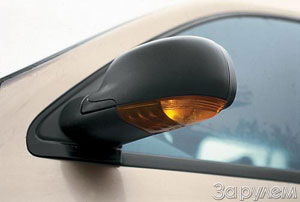 The creators of Explorer tried to give the suspension maximum strength - its levers are implausible massive. In combination with a great clearance, this allows you to fearlessly storm off -road - where it doesn’t work out, you can try from overclocking, without particularly risking to damage the suspension or at least squeeze it all the way. The rear passengers are very useful to helmets - above the very tops they have hooks for clothes and a lighting plafon. The rigid character of the machine is also manifested on the asphalt: it is noticeably shaking on potholes, sometimes because of this you have to adjust the steering path.
The creators of Explorer tried to give the suspension maximum strength - its levers are implausible massive. In combination with a great clearance, this allows you to fearlessly storm off -road - where it doesn’t work out, you can try from overclocking, without particularly risking to damage the suspension or at least squeeze it all the way. The rear passengers are very useful to helmets - above the very tops they have hooks for clothes and a lighting plafon. The rigid character of the machine is also manifested on the asphalt: it is noticeably shaking on potholes, sometimes because of this you have to adjust the steering path. The high -head trail of the trailbrail is produced by the front stabilizer of the anti -resistance stability with a giant diameter of 45 mm! On the road, the car does not notice the holes and tram tracks at all, the soft suspension swallows them without a trace, so soon you just stop slowing down in front of the potholes or go around them. But at some point, the suspension possibilities are not enough - the heavy rear axle jumps, pulling the car. But on off -road you have to crawl, like a turtle - you will not tear a bumper, so a muffler. And you won’t accelerate, so as not to sit on the belly or steps - the suspension strives to clash with stops. Incidentally, the frame is a frame, and the body is noticeably overwhelmed by diagonal hanging, so that the doors are shaken in the openings.
LOWER CASE
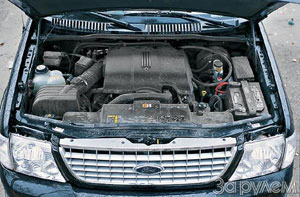 A powerful motor, and even in combination with a hydrotransformer of an automatic gearbox, allows in many cases to do without lowering transmission in the handout, activating it only in the most difficult situations. We did not need the lower register on wet clay. Nevertheless, we note that the transmission capabilities of Ford and Chevrolet are close, although only the latter has a 2N rear -wheel drive mode. The similarity begins with the 4n Auto mode with the automatic connection of the front wheels when rearranging the rear. Further, 4N HIGH with a rigid interdosseary lock and, finally, 4N LOW, in which a lowering gear is also increased.
A powerful motor, and even in combination with a hydrotransformer of an automatic gearbox, allows in many cases to do without lowering transmission in the handout, activating it only in the most difficult situations. We did not need the lower register on wet clay. Nevertheless, we note that the transmission capabilities of Ford and Chevrolet are close, although only the latter has a 2N rear -wheel drive mode. The similarity begins with the 4n Auto mode with the automatic connection of the front wheels when rearranging the rear. Further, 4N HIGH with a rigid interdosseary lock and, finally, 4N LOW, in which a lowering gear is also increased. As you can see, the creators of Ford and the Chevrolet went in different ways: the explorer turned out to be a gambling all -around, which will not be lost on the off -road, a trailler - with a comfortable highway, on which you can go to the picnic’s place with a fearlessly and confidently feel on a slippery road. Well, uncompromising is just a beautiful fairy tale.
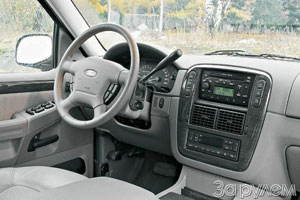 It is not easy to discern a tiny arrow on the indicator of the position of the selector. The voltmeter and indicator of the oil temperature is rather a tribute to tradition than a necessity.
It is not easy to discern a tiny arrow on the indicator of the position of the selector. The voltmeter and indicator of the oil temperature is rather a tribute to tradition than a necessity. The rear seat is from three chairs that can be formed in any combination.
The steering wheel with a diameter of 380 mm seems unusually small, although only about 20 mm does not reach the average size. The selector lever is located in American - on the steering column. The door handle is unusually large, but it can only be detected by touch or from memory.
Ford Explorer is equipped with a V8 engine (4.6 l, 178 kW/242 p.).
Ford leverage of Ford -Explorer: Profile height - 100 mm! The towing eye under the bottom in the mud is useless.
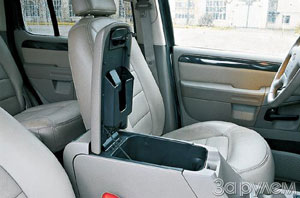
Ahead between the seats is a voluminous boxing box.
The non -examination of ergonomists - the key of switching the transmission modes (to the right of the CD -changer) are not allocated in any way and are lost on the central console among secondary buttons.
A curious solution - a gasoline pump inside the snail plated in the bottom of the tank provides a reliable supply of fuel in any rolls.
Ford at the trunk door actually has another door, smaller.
Try to immediately determine how much fuel is in the tank, whether the engine has warmed up. So we were not able to get used to the mishmash of small dials.
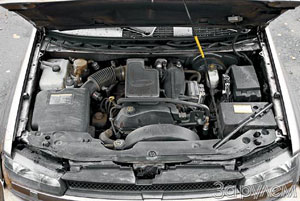 A short (only 420 mm) rear seat turned out to be quite comfortable.
A short (only 420 mm) rear seat turned out to be quite comfortable. Plastic, of course, is very practical, but painfully ... gray.
Under the hood of Chevrolet -Trailbrand - in -line six (4.2 l, 201 kW/273 hp).
Chevrolet has a clearance under the rear stabilizer only 185 mm.
Here, a low -located front bumper was unfastened at the trail -bugblood. Fortunately, it is also easily put in place.
On the lower surface of the side mirrors are the repeaters of the turning indicator.
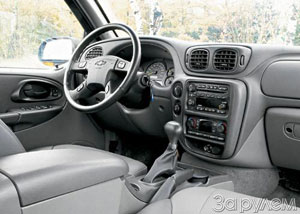 The rotating switches of the rear wiper and transmission operating modes are located nearby - they are easy to confuse them to the touch.
The rotating switches of the rear wiper and transmission operating modes are located nearby - they are easy to confuse them to the touch. Behind - a separate control panel of the audio system.
The opening, opened by the fifth door of the Chevrolet, is significantly smaller than that of Ford.
The best geometric patency is demonstrated by Ford Explorer. The almost even lower surface formed by a powerful power set of the frame is defended from asphalt by 220 mm. A large clearance in the middle of the base (245 mm) allows you to easily move through the hillocks. The obvious puncture - the front towing eye, screwed from below, located at an altitude of 195 mm - try to hook the cable for it somewhere in the mud!
More squatter Chevrolet -trailler: the clearance almost everywhere - about 190 mm, the rear stabilizer (185 mm) is most vulnerable. The low -strong muffler limits the angle of the congress (17). There is a risk of sitting on the bottom in the hill - a lumen in the middle of the base of 195 mm. With four passengers in the cabin of the lower point (170 mm) there is a plastic protection of the gas tank.
Ford Explorer
+ Large road clearance, energy -intensive suspension, a painful motor, an excellent dynamics.
- A hard suspension.
Chevrolet-trailler
+ Soft comfortable suspension, excellent dynamics, powerful motor, rich equipment, allows 92nd gasoline.
- limited off -road opportunities.
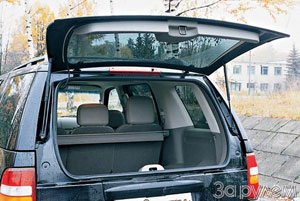
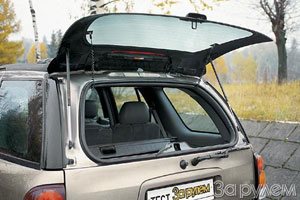
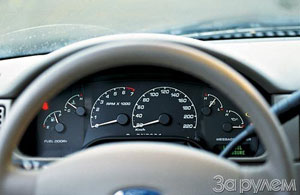
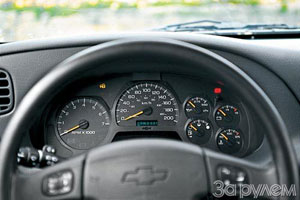
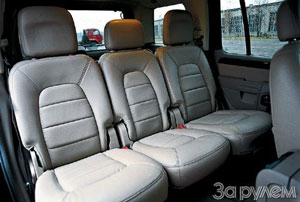
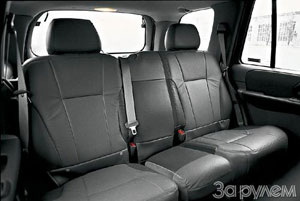
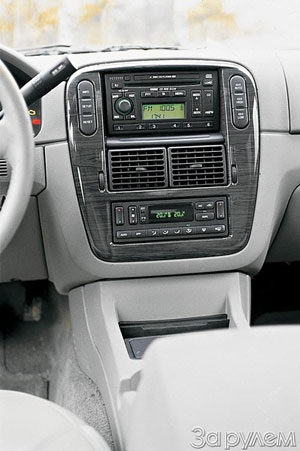
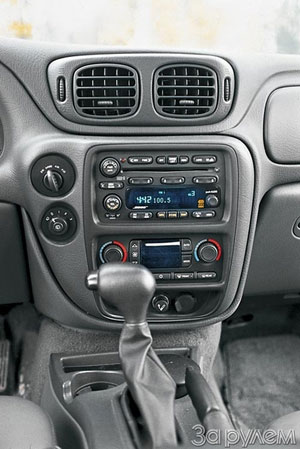
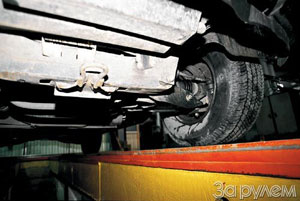
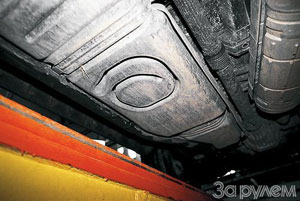
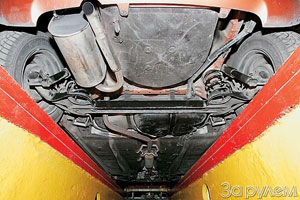
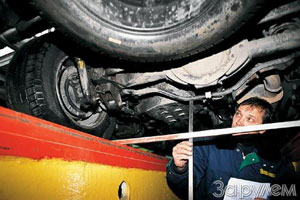
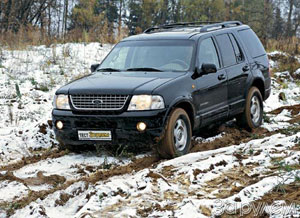
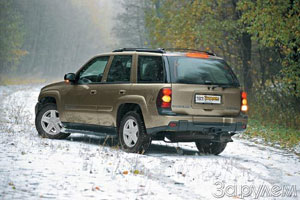
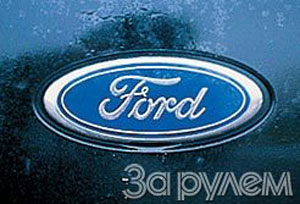
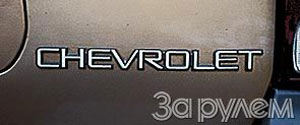
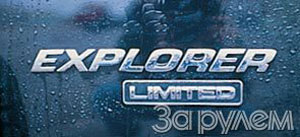
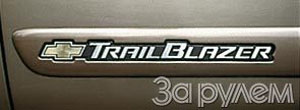
Text / Yuri Nechetov, Anatoly Karpenkov
Photo / George Sadkov
Source: The magazine "Driving"
Video crash tests Ford Explorer 2001 - 2005
Test drives Ford Explorer 2001 - 2005
Ford Explorer 2001 - 2005 Ford Explorer
Ford Explorer faults: Detailed information| Explorer 2001 - 2005 | |
|---|---|
| Engine |  |
| Transmission |  |
| Control system and suspension |  |
| Brake system |  |
| Air heating and air conditioning |  |
| Launch and charging system |  |
| Electric components and so on |  |
| Corrosion body stability |  |








